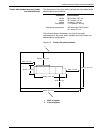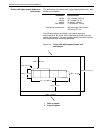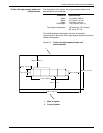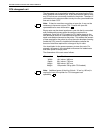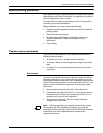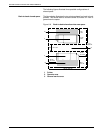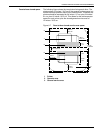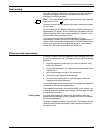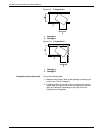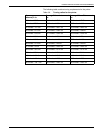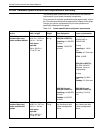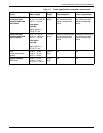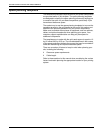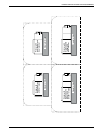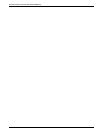
PRINTER SPECIFICATIONS AND REQUIREMENTS
XEROX DOCUPRINT 4850/4890 IPS INSTALLATION PLANNING GUIDE 6-15
Floor leveling
For proper operation, the printer must be perfectly level. On floors
less than two degrees out of level, installation personnel use a
leveling kit to level the machine.
Note: The printer will not function properly on floors more than two
degrees out of level.
If the floor is more than two degrees out of level, find another location
for the printer.
For your reference, two degrees represents a height discrepancy of
approximately 3.8 inches / 9.6 cm measured at the casters with the
printer tilting from left to right, or approximately 0.7 inches / 1.8 cm
with the printer tilting from back to front.
If you move the printer after its initial installation, it is your
responsibility to make sure that the printer can be leveled properly. If
you do not have the leveling kit (the printer in its initial location did not
require it), and you need one to level the printer in a new location,
contact your Xerox site representative to obtain one.
Delivery access requirements
It is easy to overlook the path required to move the equipment from
the truck to the operation site. To determine access, ask the following
questions:
• Does the equipment need to go up or down a stairwell? How
wide is the stairwell?
• Do you have an elevator, if the equipment is to be located above
the first floor?
• Is the elevator large enough for the equipment?
• How wide are the hallways and doorways?
• Do you have a loading dock or a specific door to which the
equipment should be delivered?
You need to review these issues before or during the site inspection
conducted by your service representative.
The equipment dimensions are specified earlier in this chapter, so it
is easy to determine whether your hallways and doorways are wide
enough to permit access.
Turning radius You must also consider the width of the passageway when the
equipment must negotiate a corner, whether into a room, an elevator,
or another passageway.
There are L-shaped turns and T-shaped turns. The diagrams and the
tables that follow show the minimum space required to maneuver
through the turns.



